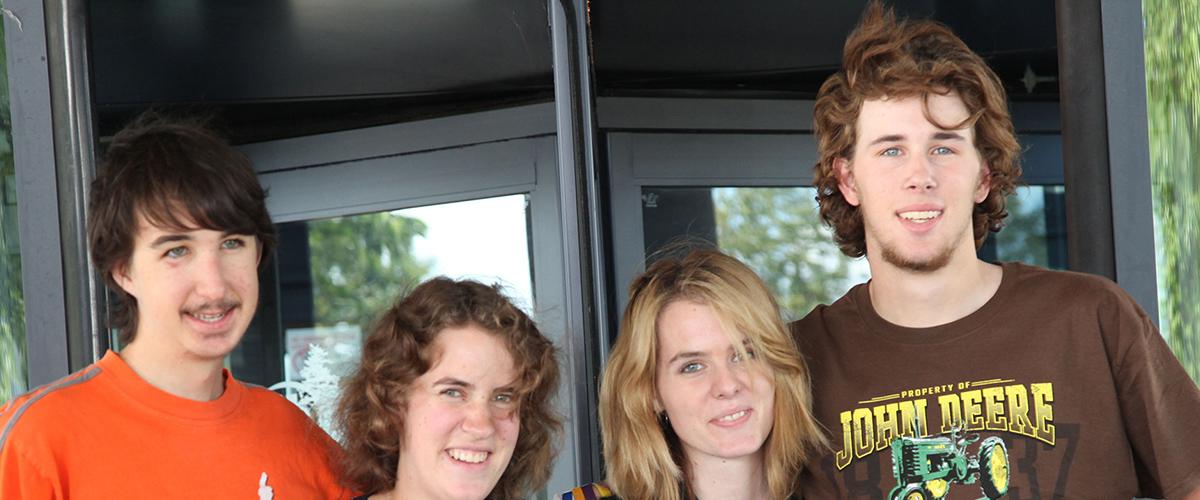MENLO PARK, CA (January 2013): MDF is pleased to announce its most recent round of Fund-A-Fellow postdoctoral fellowship research grant awards. In January 2013, MDF awarded two $100,000 grants to postdoctoral Fellows working in universities and research facilities to encourage basic research in the management, treatment and cure of myotonic dystrophy (DM) for a commitment of $200,000.
This award cycle brings the total research funding awarded by MDF to over $1.5M since its founding in 2006, and builds on MDF’s commitment to increasing the number of investigators focused on myotonic dystrophy research. To date, MDF Fellows have attracted additional research funding from larger organizations such as the National Institutes of Health, have helped influence interest in DM research at major pharmaceutical companies, and have risen to senior positions at academic and clinical settings across the United States. MDF Fund-a-Fellows have collaboratively deepened understanding of and commitment to myotonic dystrophy research significantly since the program’s founding in 2009.
Each of the two 2013-2014 FAF recipients will receive $50,000 a year for two years. The applicant pool for this year’s grant awards was extremely competitive and totaled 15, the largest ever for MDF fellowship funding. Applications were reviewed by a panel of distinguished international researchers and clinicians in the field of myotonic dystrophy. Final selections were determined by the MDF Board of Directors.
The two 2013-2014 $100,000 postdoctoral fellowship grants have been awarded to: Dr. Suzanne Rzuczek, Ph.D., The Scripps Research Institute – Florida; and Dr. Ayal Hendel, Ph.D., Stanford School of Medicine.
Research Information
Dr. Ayal Hendel, Ph.D.
CTG/CAG repeat tracts represent the genetic basis for more than a dozen inherited dominant neurological disorders including Myotonic Dystrophy type 1 (DM1) and Huntington’s disease that currently have no cure. Despite the multitude pathologies underlying these devastating disorders, they all share common etiology: the expansion of CTG/CAG repeats. Interestingly, expanded CTG/CAG repeats have been shown to be prone to double-strand breaks (DSBs). Moreover, it was shown that the repair of the DSBs leads mainly to repeat contractions. These findings suggest that controlled DSBs might provide a way to induce repeat contractions that will correct disease-causing mutation and reduce disease risk. Dr. Hendel’s research will harness a unique genome editing technology in combination with induced pluripotent stem cells to examine the contribution of DSB repair to the stimulation of repeat contractions in DM1 cells, ultimately exploring new cellular and molecular DM1 pathological mechanisms involved in myotonic dystrophy.
Dr. Suzanne Rzuczek, Ph.D.
Dr. Rzuzcek, in conjunction with the Disney Lab of The Scripps Institute, plans on using small molecules to disrupt the interaction between repeating CUG RNA and MBNL1 (muscleblind-like 1 protein), freeing it to function normally. The Disney Lab, of which Dr. Rzuczek is a member, has designed and synthesized several compounds that specifically bind the expanded CUG RNA and disrupt the interaction with MBNL1 in vitro. These compounds contain CUG-binding small molecules tethered together by a spacer. This approach is called modular assembly. Recently the spacer has been optimized to increase bioactivity and cell uptake. Dr. Rzuczek and her colleagues will improve the activity of the modularly assembled compounds using two approaches. The first will use the repeating DM1 RNA as a template to assemble small compounds with their optimized spacer into large modularly assembled structures within cells. This process is known as in situ click chemistry. The second approach will screen many small molecules that are similar to the known binders of DM1 RNA. Hit compounds will be screened in cells using a method that detects low levels of bioactivity. Compounds that are active in cells will be modularly assembled on the Disney-optimized spacer to enhance the interaction with DM1 RNA and improve bioactivity. If successful, these compounds could become a treatment for myotonic dystrophy.
01/23/2013

